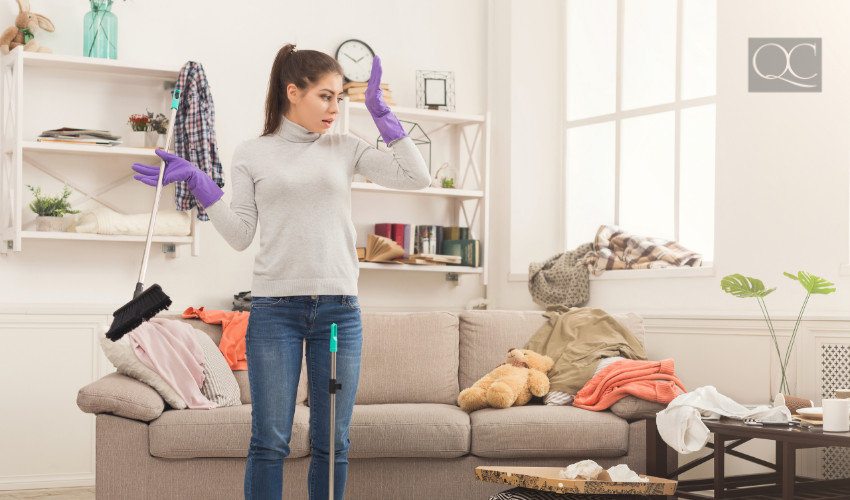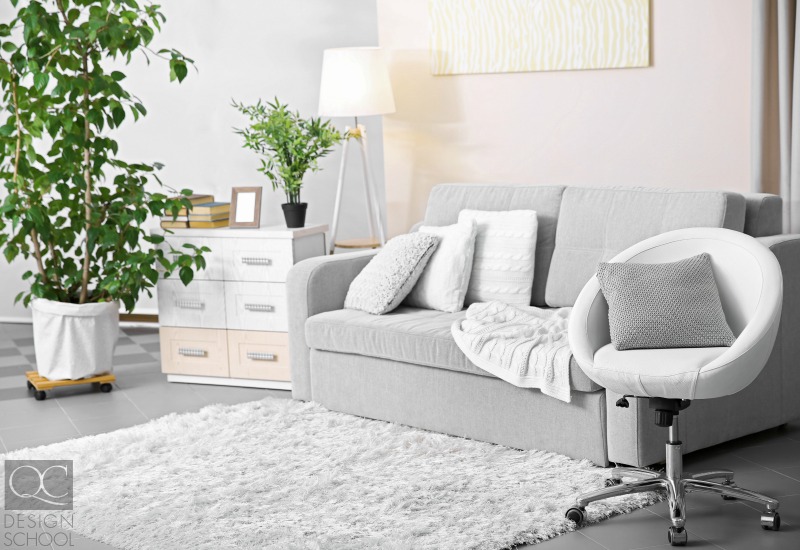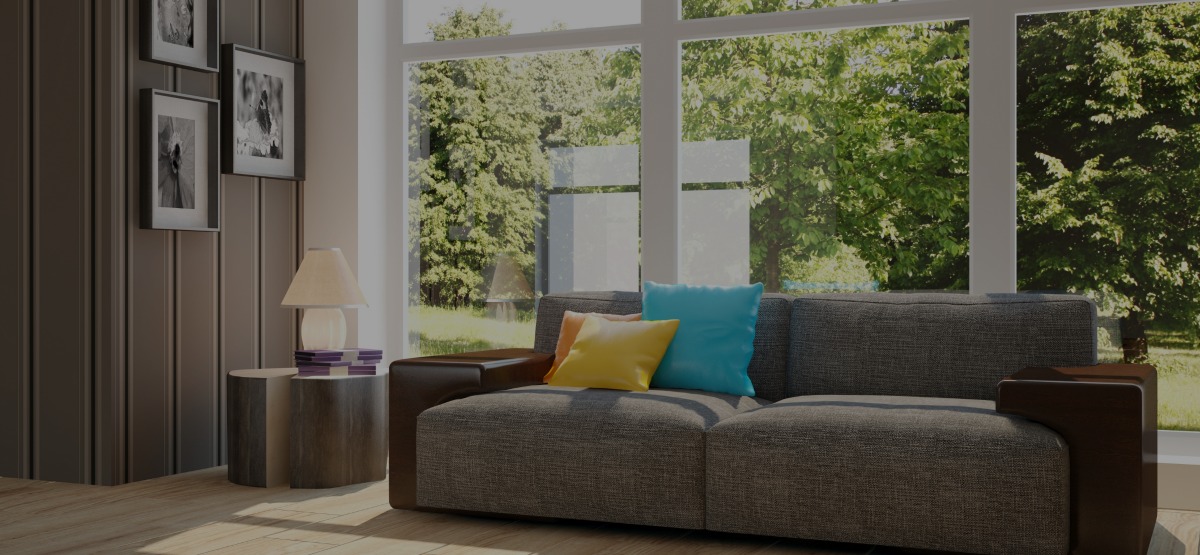Let’s be honest: A disorganized space with jumbled belongings strewn around is an eyesore. Plus, it’s also the number one obstacle to healthy Ch’i flow in a feng shui design!
Clutter accumulates when people are tired, in a rush, or have an “I’ll do it later” mentality. While some people are on top of things—decluttering and cleaning their homes from top to bottom every week—others aren’t. But, even those who clean their homes regularly may be harboring junk. Just because it’s not out in the open doesn’t mean it isn’t having an effect on its surroundings!
As a feng shui professional, it’s your job to identify clutter and help your clients deal with it! Not sure where to begin? Read on for our quick guide on how to declutter a room!
What is clutter?

Physical clutter such as junk mail, dirty laundry that isn’t put away, and the junk drawer are obvious suspects. This also extends to gifts your clients keep out of guilt, “what if I’ll need these later” items, and the forgotten boxes in the attic! Even often-used items can become clutter when they don’t comfortably fit in the home. Physical clutter can cause emotional clutter. Feelings of anxiety, worry, or resentment stress out your client and leave them unhappy.
Some objects can actually become clutter. A trophy from your client’s 7th grade spelling bee win probably meant a lot to them once. Now their children’s achievements are more significant to them. If feelings of success and achievement no longer reside in those objects… they’ve slipped into the realm of clutter. Mementos from previous relationships may also become clutter if they’re associated with negative memories. These are just a sample of many different scenarios where objects can become clutter.
At one time, these objects probably contributed positive Ch’i to their owner’s life. But as Ch’i changes, so do relationships between objects and their owners.

Understanding Ch’i
Ch’i flows in and around everything. You, your clients, their home, and all their possessions. It animates everything—although not always to the extent of walking, talking, or feeling emotions. This energy connects every other object in its surrounding environment. Nothing exists in isolation. Everything has an impact.
Clutter traps Ch’i and prevents it from flowing. Stagnant Ch’i can negatively affect a homeowner’s life. When they’re surrounded with items they don’t use or worse, items associated with negativity, they’ll feel emotionally burdened.
Ask your clients to treat their material objects as living things. This new perspective allows them to decide which items are really meaningful. Some personal belongings don’t actually bring clients any happiness. Remember to never force your clients to toss something that they care about. It will do more harm than good. That being said, if it doesn’t contribute to their happiness or inspire success, it’s not worth keeping!
The decluttering process
On HGTV, the decluttering process seems to begin and end in a hectic 24 hours. The truth is, decluttering should happen at your client’s pace. They need to feel empowered and want to take control of their space.
You’ll likely encounter two types of clients. Let’s talk about the first kind. These are the people who after meeting with you for the first time become motivated to start right away. They are very accepting of your recommendations and harness their energy in a productive way. The second type of client is put off by the work. It is a huge, daunting task, but let them know that it gets easier. After they see all the free space they clear up, they’ll enjoy the progress!
Your clients may have a hard time finding a logical place to get started. They should start in the spaces that are the most cluttered and contribute most heavily to stagnant Ch’i.

Let’s give an example…
The kitchen is one of the areas of the home where people spend the most time. It’s one of those places where a bunch of different equipment is stored and used on a daily basis. When your clients cook, do they feel that it quickly becomes too messy? Is it difficult to clean up after the process? Are they discouraged from the prospect of cooking because their kitchen isn’t functional?
Clearing the countertops and putting away everything unused on a daily basis is necessary. Store items used a few days a week in the cupboards and drawers. That being said, don’t’ just move everything off the counters and into the drawers. These areas are actually the most common sources of clutter. Refrigerators, cabinets, cupboards, and closets! These areas contain hidden objects and clutter. But just because you can’t see them doesn’t mean they don’t affect the Ch’I flow.
Go through every item in these storage areas. Toss everything expired, broken and unusable. Food items may appear okay, but they may have expired weeks or even months ago. Check the expiration date! Remove any duplicate or potentially rusty tools. Your clients may wish to donate extra or unused kitchen appliances or equipment or give to friends/family. Stuffing them back into clean drawers afterwards would only set them back to square one!
Then, advise them to scrub down and thoroughly clean the shelves, drawers, and possibly even the items within them. Once they have a clean environment to work with, it’s easy to become motivated to cook every day.

When your clients have a clean fridge, cooking meals will become much more enjoyable. They’ll have more space for creativity in the kitchen, and it’ll bring positive Ch’i to the space. After this initial de-cluttering is complete, advise your clients to check their fridge once a week to prevent the clutter from returning!
Decluttering can be part of a daily routine! It’s much easier to do a little bit every day than to book off an entire weekend to do it! It also works much better when it’s an ongoing practice. Something as simple as putting things back after using them can make a big difference day to day!
Is decluttering your forte? Let us know how you manage!
